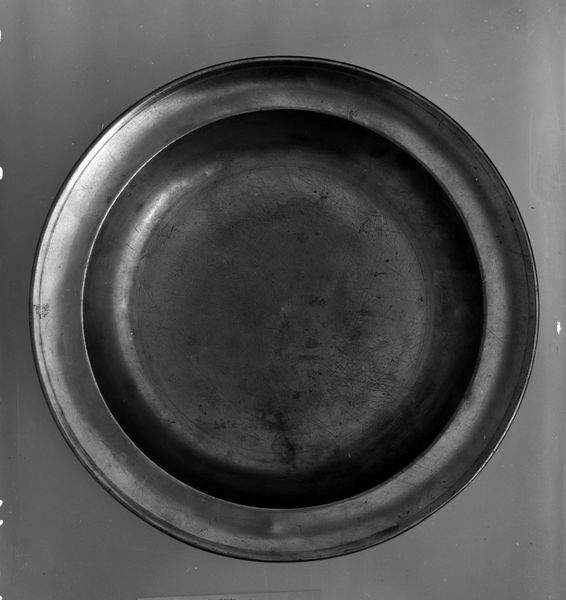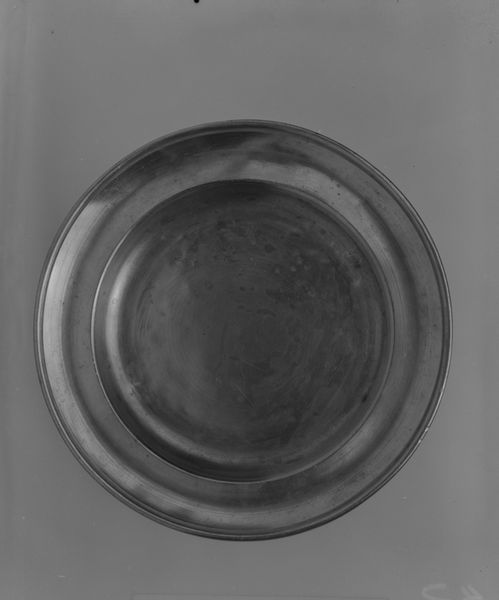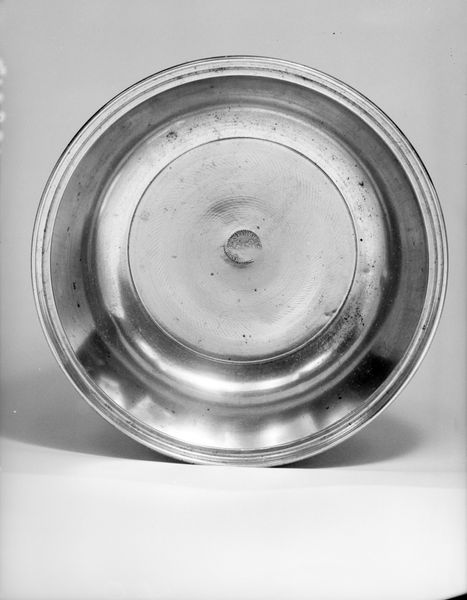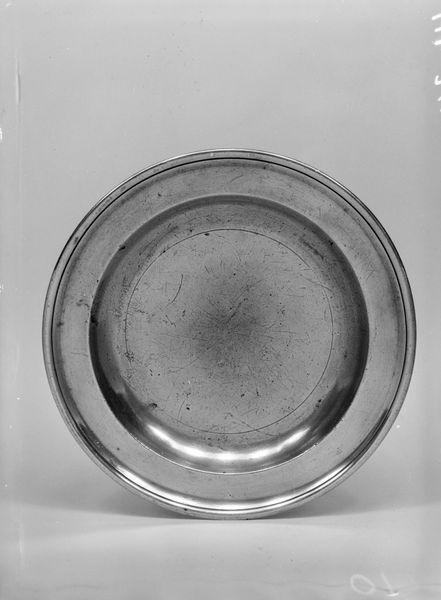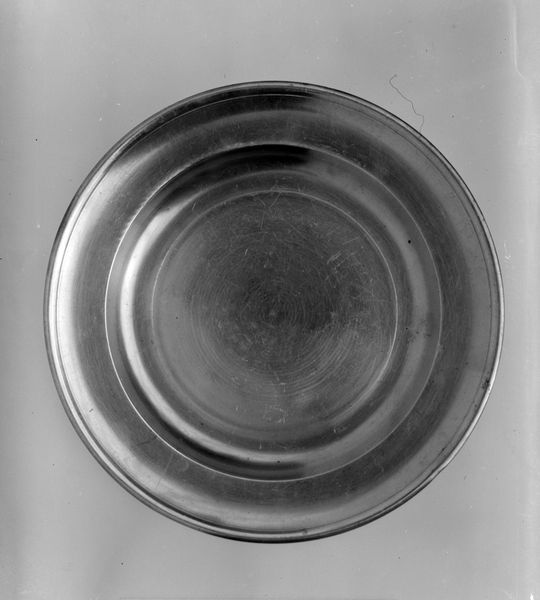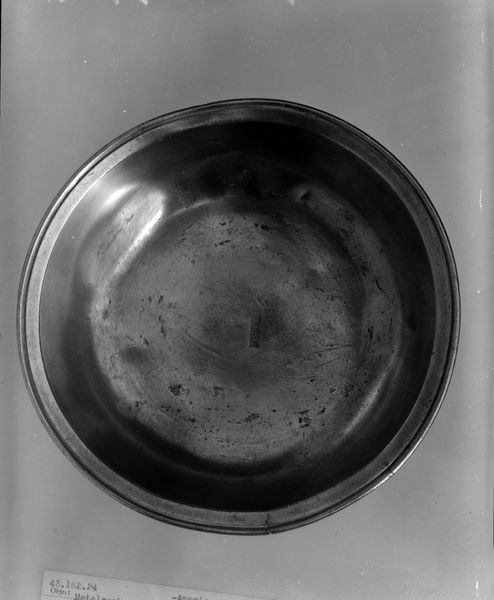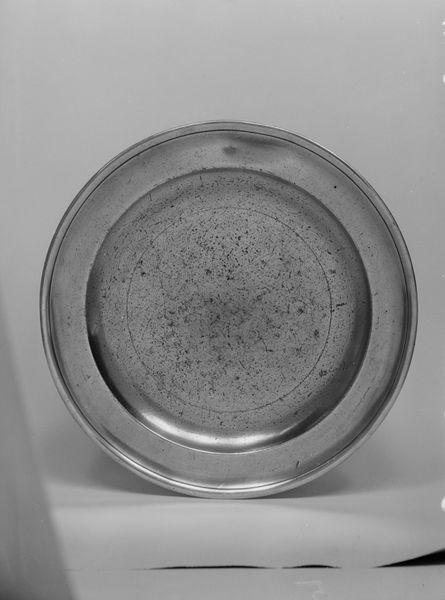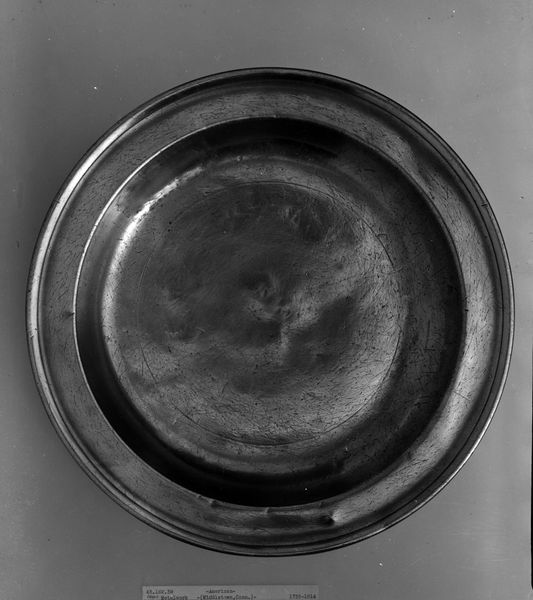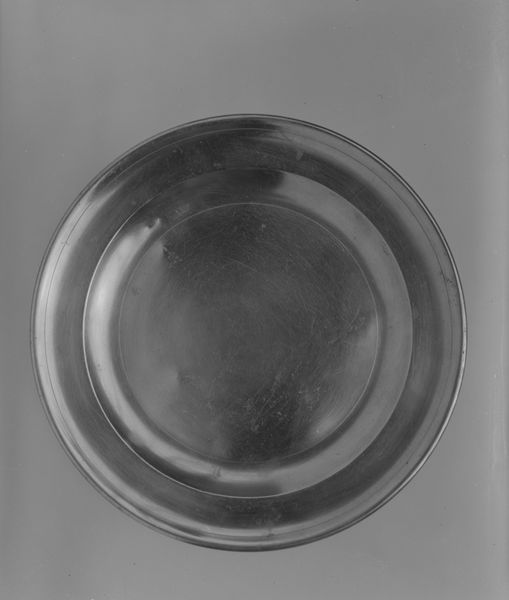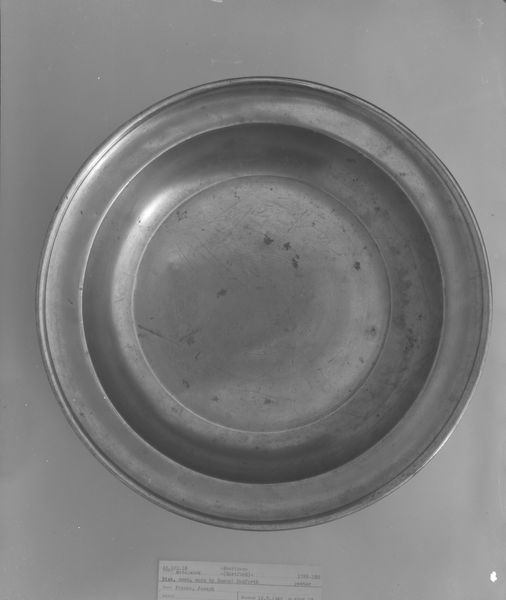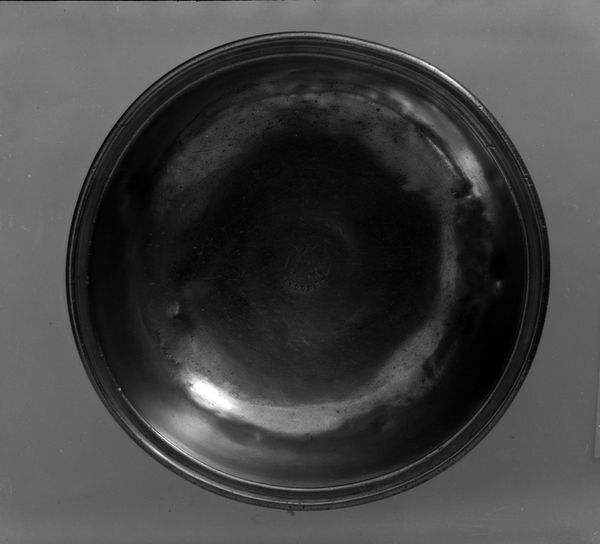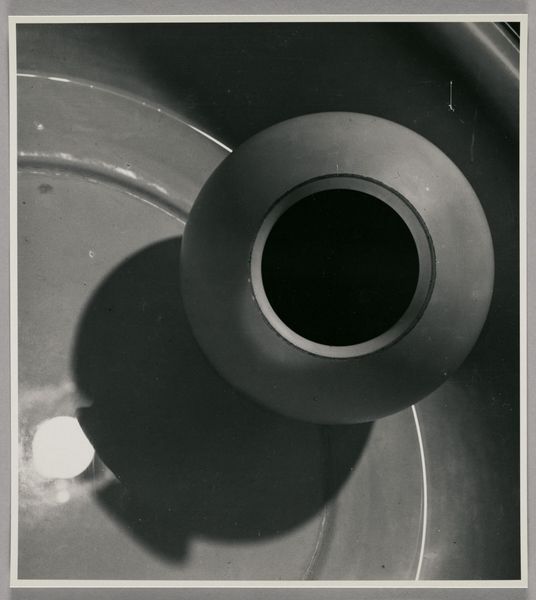
metal, sculpture
#
metal
#
sculpture
#
sculpture
Dimensions: H. 1 1/2 in. (3.8 cm); Diam. 13 1/4 in. (33.7 cm)
Copyright: Public Domain
Editor: Here we have a metal dish, dating from between 1793 and 1813. It’s deceptively simple – at first glance, just a commonplace object. What strikes me most is how much the material itself defines it; it’s the inherent properties of the metal that dictate its form. What else can we unpack from this piece? Curator: What is compelling is not only its simple design but the process behind its construction, likely involving a repetitive, potentially strenuous labor. Consider the maker: was it individually crafted or part of a mass-produced set? Its material indicates utilitarian value, reflecting social access and historical patterns of consumption of dishware in metal in late 18th- and early 19th-century homes. The signs of use add another layer—scratches, marks, age and other effects resulting from everyday use. Editor: That’s a great point. The metal itself has its own history, extracted, processed, then formed, then worn down over time by human hands. Is it fair to call something primarily functional a work of art? Curator: Function and aesthetics often overlap, or at least reflect one another! Consider what this says about divisions between art and craft during that period. Metalwork wasn't always considered "high art," so by examining the means of production we begin to understand shifting boundaries. Is art something purely aesthetic or something that also occupies material function within the broader society? Editor: So the artistry lies not only in the visual result, but in the material transformation, the labor, and the use it served within society. I now look at this object differently. Curator: Exactly! The dish invites us to reflect on consumption and material culture in a given historical time and place. Editor: I’ll remember to look beyond mere appearance. Thank you!
Comments
No comments
Be the first to comment and join the conversation on the ultimate creative platform.
